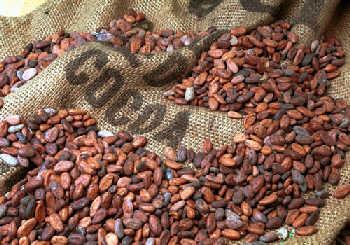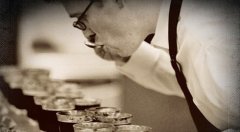We need to pay attention to some key points in the process of baking.

You need to pay attention to some key points in the baking process.
First, the firepower should not be too strong, or the beans are not baked evenly, there are strong and light, the taste is very bad.
Second, do not bake quickly with a strong fire, because the baking is excessive, and the bean heart burns with bitterness, so be patient.
Third, during baking, there will be thick smoke and fragrance, and the skin of coffee beans will bloom at the beginning. So you should cover the gas stove with aluminum foil in advance, and you can also bring the gas stove to the outdoors to enjoy the fun of baking coffee beans.
Fourth, the biggest enemy of coffee beans in baking is oxygen and light (even in dim light); because once coffee beans are baked, the aroma produced on the surface of coffee beans will soon disappear, and the oil precipitated from the surface of coffee beans will be oxidized. And then produce the smell of coal and rot.
Fifth, the baking appliances themselves can also produce great destructiveness. If the coffee beans are not baked to the necessary temperature or long enough, the oil will not ooze, and if the temperature is too high or too long, the taste will fade and have a scorched smell. Burnt coffee is always unpleasant.
If roasting coffee beans is very good, it will also become an art. In the process of roasting, coffee beans will produce a variety of flavors and fragrances. Without this process, the coffee in the cup will be obviously insufficient.
Chemical reaction of Coffee in roasting
Coffee has a rich, wide range of flavors. Coffee produced in different regions, different elevations, different climates and different producing areas has its own unique characteristics. Raw beans are fragrant and have no usual coffee taste at all; the taste of coffee comes from proper roasting. Show fruity (light roasting) or caramel sweetness (deep roasting). The shallower the baked, the more sour the taste, and the deeper the baked, the more bitter the taste.
Raw beans in high temperature environment, through thermal decomposition, coffee raw bean components such as chlorogenic acid, protein and fat undergo a series of chemical changes (mainly Mena reaction) to produce coffee aroma substances. including aldehydes, lipids, ketones, acids and so on.
The relationship between the changes of material properties and temperature in the process of thermophysical and chemical decomposition of coffee beans before and after baking:
When the bean temperature > 100℃, the color of raw beans changes from green to yellow, and when the moisture is on, it is lost for dehydration, resulting in a smell similar to that of baked bread.
Bean temperature > 120,130 ℃, raw bean color changes to light brown.
The bean temperature is about 150℃ to produce the smell of stir-fried barley.
The bean temperature is about 180 ℃ and begins to produce green smoke. The first explosion begins to produce chemical pyrolysis reaction, which releases a large amount of CO2. The burst sound occurs, the color turns brown, and the size of the bean increases.
The bean temperature is about 210 ℃, the first explosion is over, and the color continues to darken.
The second explosion of the bean temperature was about 220℃ ~ 230℃. The color continued to become dark and dark brown, and oil appeared on the surface of the coffee bean.
The bean temperature is about 240℃ ~ 270℃. Although the temperature increases, the darker the bean color, the more gas is released, the volume continues to expand, the coffee bean surface oils out, and the coffee aroma changes fully.
The bean temperature is about 270℃ to stop releasing smoke, the color is black, the appearance becomes dark, and the volume is no longer larger.
The bean temperature is about 300 ℃. The beans are black, puffy and fragile, and the aroma disappears completely and becomes carbonized.
The general actual baking temperature range is 185-240 ℃. In addition to the influence of temperature on the flavor of coffee, the way and equipment of roasting also have an effect.
Important Notice :
前街咖啡 FrontStreet Coffee has moved to new addredd:
FrontStreet Coffee Address: 315,Donghua East Road,GuangZhou
Tel:020 38364473
- Prev

The "manual baking" method of using hand filter screen
When it comes to hand-baking, the layman always thinks it is difficult. But as long as you can really grasp a few key points, it will be very difficult not to return. At the beginning, you may not be able to stir-fry well, but after you are proficient, you can skillfully add or subtract Chengdu according to your own preferences. Here will introduce to you the manual method of using hand filter: 1. Buy a filter with a handle. Raw coffee beans are best selected.
- Next

Do you want to bake and then mix, or do you want to mix and bake first?
Is the relationship between matching and baking baking before blending, or is the relationship between matching and baking first? Which way is better? If you have a definite recipe, of course the easiest way is to put different coffee beans together and then bake them together. But if you are trying and comparing different ingredients and proportions, you certainly want to roast all kinds of coffee beans first.
Related
- Beginners will see the "Coffee pull flower" guide!
- What is the difference between ice blog purified milk and ordinary milk coffee?
- Why is the Philippines the largest producer of crops in Liberia?
- For coffee extraction, should the fine powder be retained?
- How does extracted espresso fill pressed powder? How much strength does it take to press the powder?
- How to make jasmine cold extract coffee? Is the jasmine + latte good?
- Will this little toy really make the coffee taste better? How does Lily Drip affect coffee extraction?
- Will the action of slapping the filter cup also affect coffee extraction?
- What's the difference between powder-to-water ratio and powder-to-liquid ratio?
- What is the Ethiopian local species? What does it have to do with Heirloom native species?

